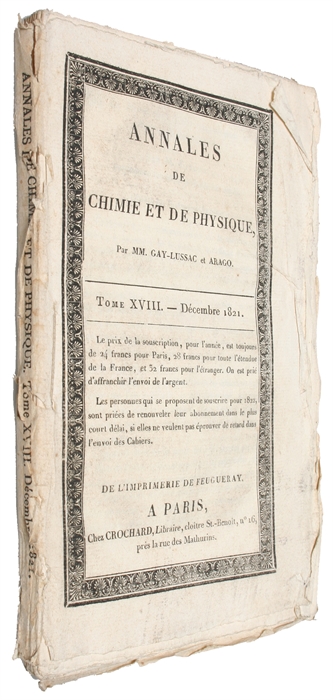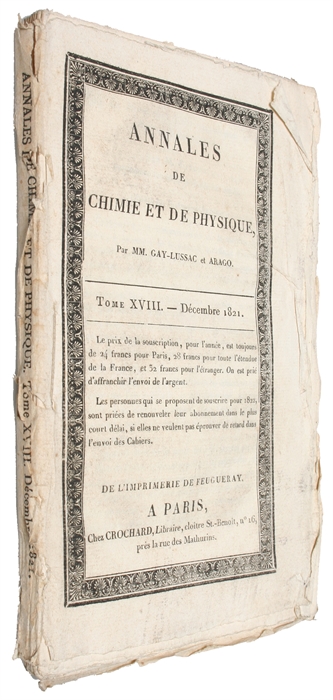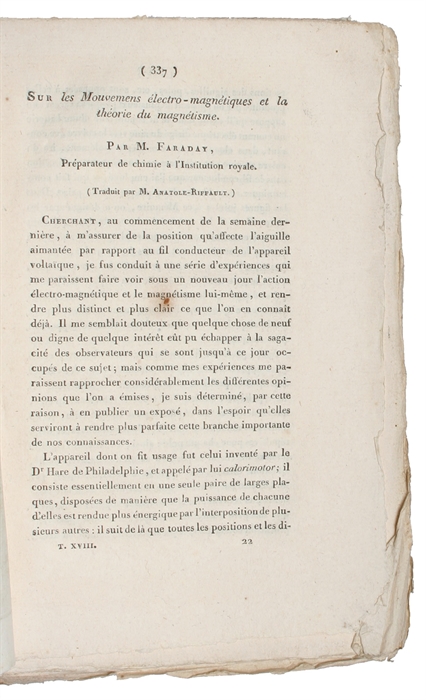THE DISCOVERY OF ELECTROMAGNETIC ROTATION
FARADAY, (MICHAEL).
Sur les Mouvemens électro-magnétiques à la théorie du magnétisme. (Traduit par M. Anatole-Riffault). (On some New Electro-Magnetical Motions, and on the Theory of Magnetism).
Paris, L'Imprimerie de Feugueray, 1821. Small8vo. Orig. printed wrappers. Totally uncut. "Annales de Chimie et de Physique, par MM. Gay-Lussac et Arago", tome XVIII. - Decembre 1821, pp. 337-448 and 1 engraved plate. (The entire December-issue). Faraday's paper: pp. 337-370.
First appearance in French of this landmark paper in electromagnetism. The present paper is a translation into French of Faraday's seminal paper "On some New Electro-Magnetical Motions, and on the Theory of Magnetism", which was originally published on October 21 in "The Quaterly Journal of Science", between one and two months before the present French version, which was published in "Annales de Chimie et de Physique", in December the same year. The work contains the first published mentioning of the "LINE AND FORCE CONCEPT".
Faraday employed a magnet and a wire with a flowing current, caused each separately to rotate round the other, and concluded that a current-carrying wire is surrounded by a circular "line" of magnetic force.
"Ever since Hans Christian Oersted's announcement of the discovery of electromagnetism in the summer of 1820, editors of scientific journals had been inundated with articles on the phenomenon...Inspired by the editor of Philosophical Magazine, Richard Phillips, Faraday agreed to undertake a short historical survey but he did so reluctantly, since his attention was focused on problems of chemistry rather remote from electromagnetism. His entusiasm was aroused in September 1821, when he turned to the investigation of the peculiar nature of the magnetic force created by an electrical current. Oersted had spoken of the "electric conflict" surrounding the wire and had noted that "this conflict performs circles", but this imprecise description had had little impact upon Faraday. Yet as he experimented he saw precisely what was happening. Using a small magnetic needle to map the pattern of magnetic force, he noted that one of the poles of the needle turned in a circle as it was carried around the wire. He immediately realized that a single magnetic pole would rotate unceasingly around the current-carrying wire so long as the current flowed. He then set about devising an instrument to illustrate this effect...and so his experiment records the FIRST CONVERSION OF ELECTRICAL INTO MECHANICAL ENERGY. (Based on the article in DSB).- Faraday's discovery of "the lines of magnetic force" became the starting point for the revolutionary theories of Clark Maxwell and later of Einstein.
Order-nr.: 39123



